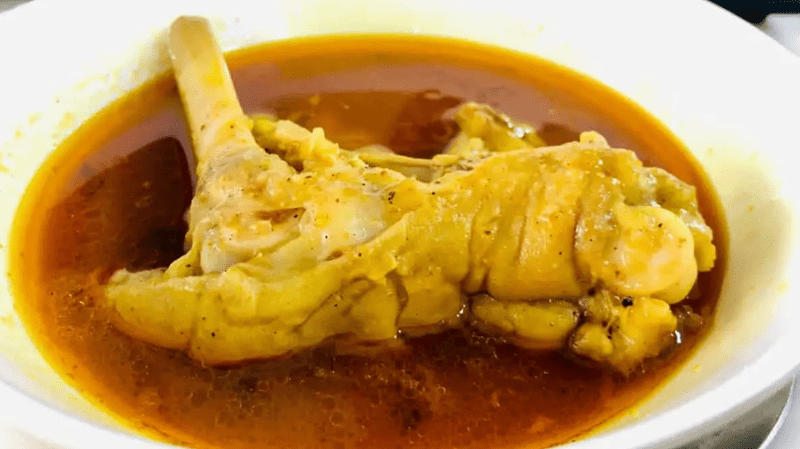With the winter season reaching its peak, everyone’s looking for ways to keep themselves warm and cosy. From hot beverages to soups and stews, several delicacies are being prepared in Indian households to help bear the cold weather. Among these is the Parsi-special winter delight, Kharia Ni Jelly.
Image credits: Paya Soup
For those well-versed with Parsi culture and cuisine, you’d know that the Zoroastrian believers go big on meat-based dishes when it comes to their food. Their cuisine is inherently meat-intensive, with lamb meat dishes foraying into breakfast, lunch, and dinner. Not just that, their love for eggs is also quite well-known to all.
While breakfast in Parsi homes usually comprises freshly baked buns and breads along with akuri, Parsi-style scrambled eggs in various forms, winters call for a special meaty treat. What is that, you ask? It is Kharia Ni Jelly. The name may sound quite unusual but the dish seems to have a connection with the royal winter favourite, paya soup. For the uninitiated, paya refers to goat or lamb trotters, using which the heavenly soup is prepared.
Similar to this, the Parsis relish a hot and warming bowl of Kharia Ni Jelly during winter. It is a delicious concoction made with jellied goat or lamb trotters that are sweetened with the addition of sugar. The texture and consistency of this breakfast stew is what makes it different from the paya soup. Did you know that this stew requires several hours of slow-cooking and the preparations begin days in advance?
What makes Kharia Ni Jelly unique
The specialty of this Parsi meaty stew lies in the fact that it is slow-cooked in a jellied form, as opposed to paya soup. While the latter is savoury, the former has a sweet, jelly-flavour and texture due to the addition of sugar, which adds to the uniqueness of the stew. It is flavoured with aromatic spices like nutmeg and cloves that not just make it fragrant but contribute to the warming properties of this stew too.
However, the highlight of Kharia Ni Jelly is sherry or brandy that is added near the end after the stew is almost ready, lending it a boozy touch. Brandy is known to provide heat to the body during the chilly weather and therefore, adding it to the stew simply amps up the warmth. Sometimes, even lime juice or orange juice is added to give it a citrusy touch.
The process of making Kharia Ni Jelly is quite cumbersome. From cleaning the trotters to removing the hair and making it fit for consumption, the preparation is very time-consuming. Another delectable Parsi specialty that takes a slight diversion of this trotter soup is the Chora Ma Kharia, which is a trotter and ‘chora’ (black-eyed peas) concoction that has rich and deep flavours. This gravy is usually paired with a tangy tamarind and jaggery chutney, called Gor Amli Kachumber, and often served alongside a crusty local bread, called Brun.

